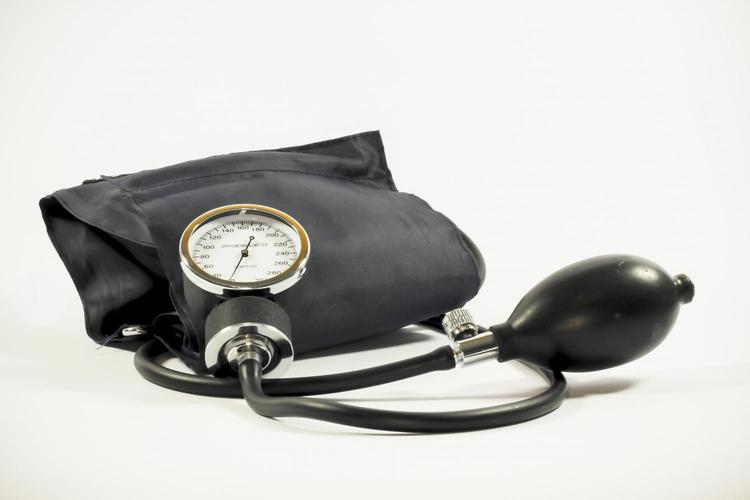In response to a 911 alert or page, firefighters' systolic and diastolic blood pressure surges and their heart rate accelerates, with a similar response whether the call is for a fire or medical emergency, a small study suggests.
On average, the 41 firefighters monitored in the study, who were middle-aged and overweight, had a 9% increase in systolic blood pressure when called to a fire, a 9% increase in diastolic blood pressure when called to a medical emergency, and a 16% increase in heart rate for both types of calls.
Senior study author Deborah Feairheller, PhD, presented these results at the virtual American Heart Association (AHA) 2021 Scientific Sessions 2021.
Firefighters have a higher prevalence of cardiovascular disease (CVD) than the general population, Feairheller, director of the Hypertension and Endothelial function with Aerobic and Resistance Training (HEART) Lab and clinical associate professor of kinesiology at the University of New Hampshire in Durham, explained.
More than 50% of firefighter deaths in the line of duty are from CVD, she noted. Moreover, almost 75% of firefighters have hypertension and fewer than 25% have it under control.
The study findings show that all emergency and first responders "should know what their typical blood pressure level is and be aware of how it fluctuates," Feairheller said in a press release from the AHA. "Most important, if they have high blood pressure, they should make sure it is well controlled," she said.
"I really hope that fire departments everywhere see these data, rise to the occasion, and advocate for BP awareness in their crews," Feairheller, herself a volunteer firefighter, added to theheart.org | Medscape Cardiology in an email.
"I do think this has value to any occupation that wears a pager," she added. "Clinicians, physicians, other emergency responders, all of those occupations are stressful and could place people at risk if they have undiagnosed or uncontrolled hypertension."
Invited to comment, Comilla Sasson, MD, PhD, an emergency department physician who was not involved with this research, also saw parallels between stress experienced by firefighters and, for example, emergency department physicians.
The transient increases in BP, both systolic and diastolic, along with the heart rate are likely due to the body's natural fight or flight response to an emergency call, including increases in epinephrine and cortisol, said Sasson, who is vice president for Science & Innovation for Emergency Cardiovascular Care at the American Heart Association.
"The thing that is most interesting to me," she told theheart.org | Medscape Cardiology, especially as an ER doc who can have a series of high-stress situations on a shift, such as multiple trauma victims, a stroke victim, a person in cardiac arrest, is "what is the cumulative impact of this over time?"
She wonders if "having to be 'ready to go' at any time, along with disruptions in sleep/wake schedules, poorer eating and working-out habits when you are on shift, has long-term sequelae on the body."
Stress-related surges in blood pressure "could be a reason for worse health outcomes in this group," Sasson said, but this needs to be investigated further.
Feairheller and colleagues recruited 41 volunteer and employee firefighters from suburban Philadelphia and Dover, New Hampshire.

On average, the 37 men and four women had a mean age of 41 years, had been working as firefighters for 16.9 years, and had a mean body mass index of 30.3 kg/m2.
They wore an ambulatory blood pressure monitor during an on-call work shift for at least 12 consecutive hours.
In addition to the automatic readings, the participants were instructed to prompt the machine to take a reading whenever a pager or emergency call sounded or when they felt they were entering a stressful situation.
Over the 12-hour shift, on average, participants had a blood pressure of 131/79.3 mm Hg and a heart rate of 75.7 bpm.
When they were alerted go to a fire, their blood pressure surged by 19.2/10.5 mm Hg, and their heart rate rose to 85.5 bpm.
Similarly, when they were alerted to go to a medical emergency, their blood pressure jumped up by 18.7/16.5 mm Hg and their heart rate climbed to 90.5 bpm.
The surges in blood pressure and heart rate were similar when participants were riding in the fire truck to a call or when the call turned out to be a false alarm.
"If we can increase awareness and identify specific risk factors in firefighters," Feairheller said, this could potentially "save a life of someone who spends their day saving lives and property."
To start, "regular, in-station or home BP monitoring should be encouraged," she said. "Firefighters should start to track their BP levels in the morning, at night, at work."
"Being a volunteer firefighter myself, I know the stress and anxiety and sadness and heavy work that comes with the job," she said. "I want to be able to do what I can to help make the crews healthier."
Sasson suggested that ways to increase awareness and improve the health of firefighters might include "counseling, appropriate breaks, possibly food service/delivery to provide better nutritional options, built-in time for exercise (gym or cardio equipment on site), and discussions about how stress can impact the body over time."
It is also important to advocate for better mental health care, because people may have PTSD, depression, substance abuse, or other mental health conditions brought on by their stressful jobs.
"Also, it would be interesting to know what is the current state of health monitoring (both physical, mental, and emotional) that occurs for firefighters," she said.
The study was funded by the American Heart Association. The authors and Sasson report no disclosures.
American Heart Association (AHA) Scientific Sessions 2021: Abstract P2313. Presented November 13, 2021.
For more from theheart.org | Medscape Cardiology, follow us on Twitter and Facebook.
